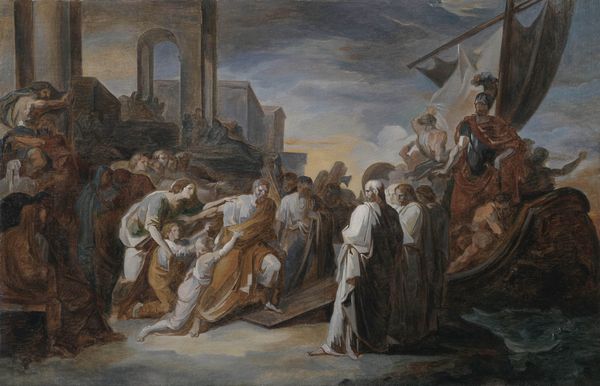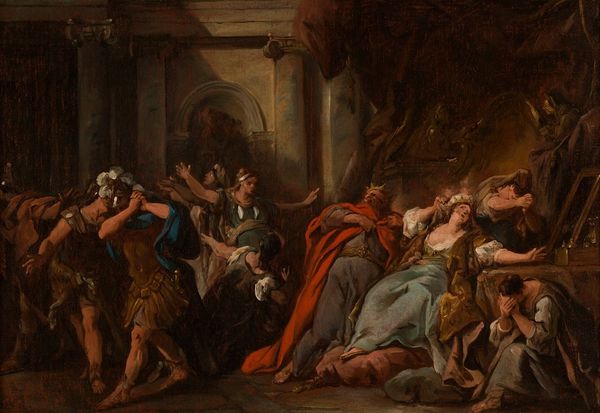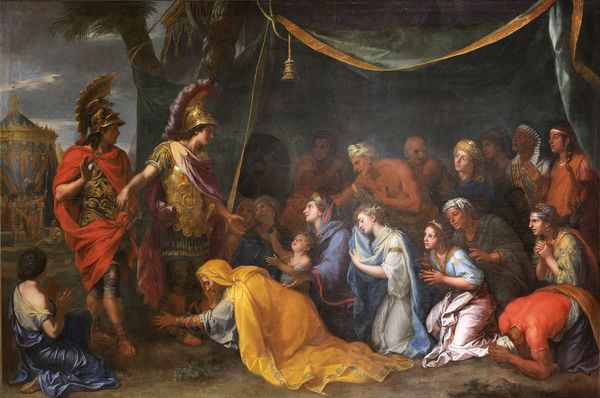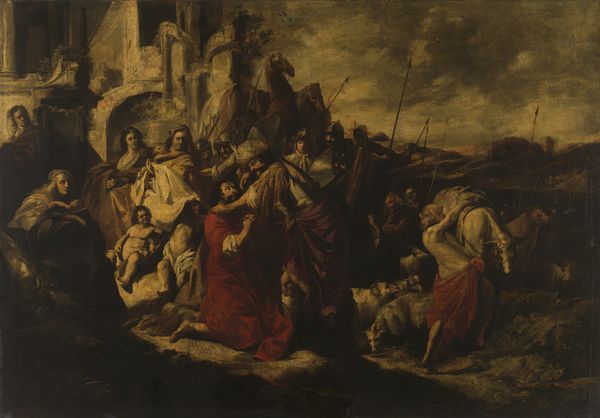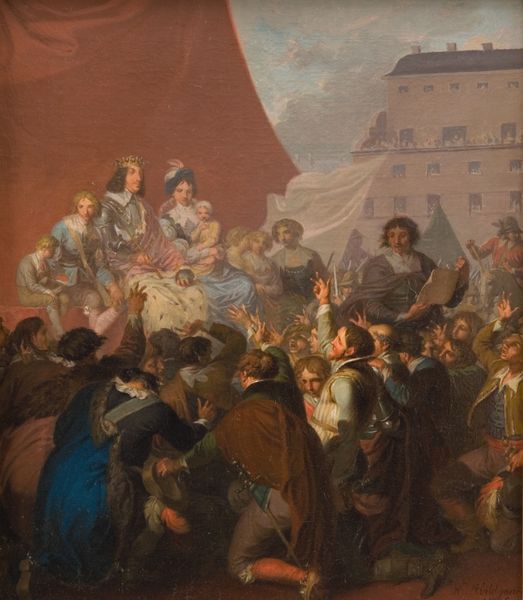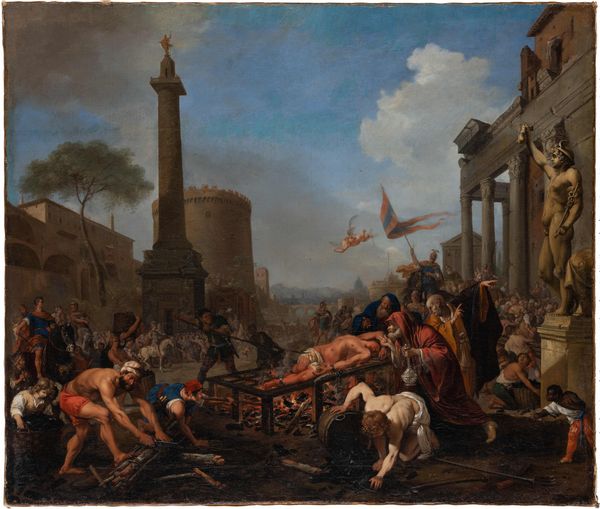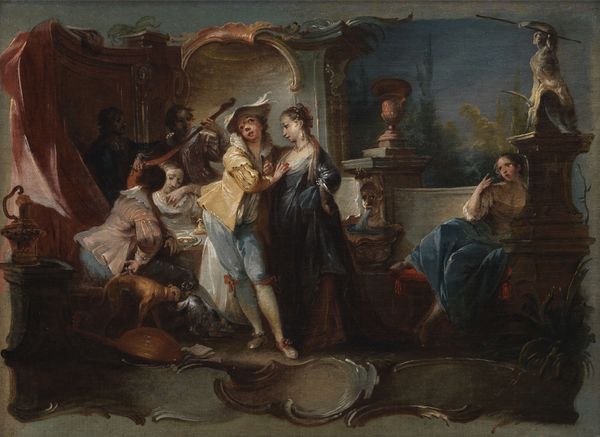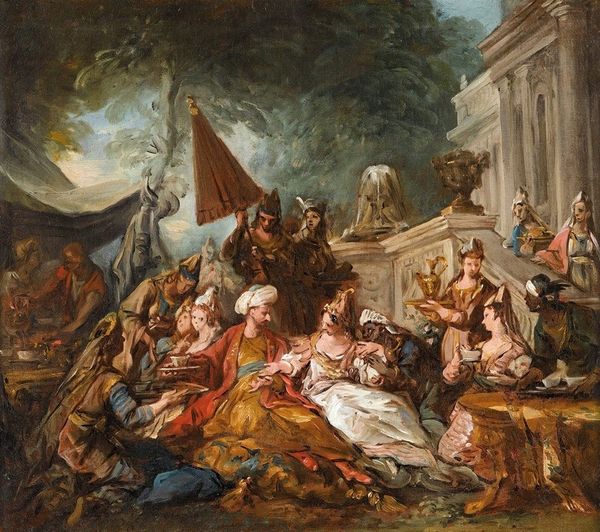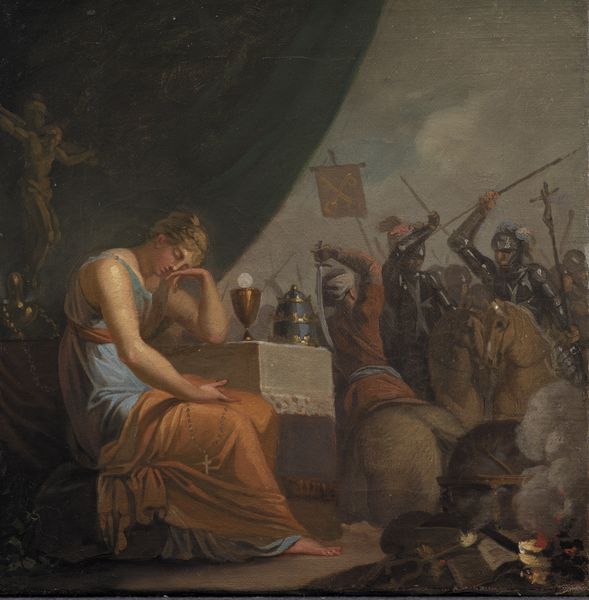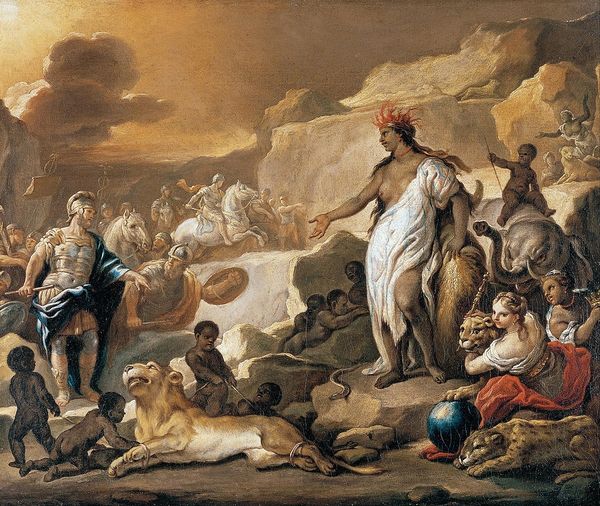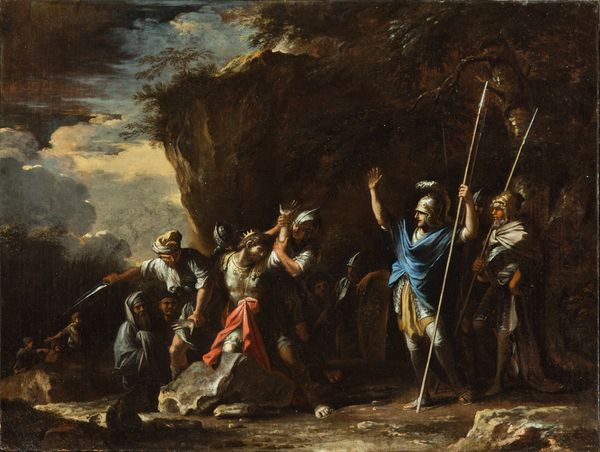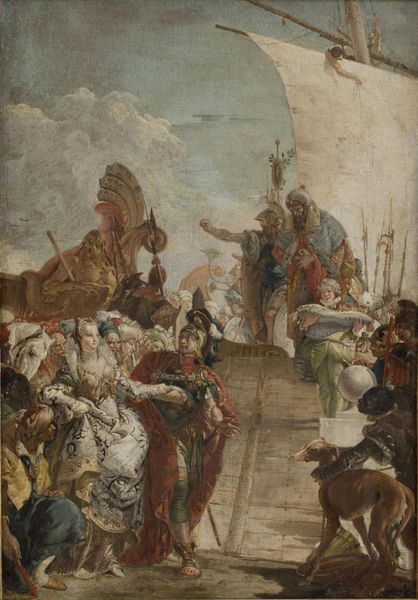
Slutningsscenen af Johannes Ewalds "Balders Død" 1741 - 1782
0:00
0:00
Dimensions: 62.5 cm (height) x 78 cm (width) (Netto), 74 cm (height) x 89.4 cm (width) x 7.5 cm (depth) (Brutto)
Curator: What we're looking at now is "Slutningsscenen af Johannes Ewalds 'Balders Død'," or "The Final Scene of Johannes Ewald's 'The Death of Balder'," painted between 1741 and 1782 by Peter Cramer. It's an oil painting currently housed here at the SMK. Editor: Oh, wow. First thought: drama bomb! Everyone's either weeping, fainting, or staring skyward. Is that Balder sprawled on the ground there? Looks like a Norse tragedy in progress. Very...stagy. Curator: Indeed. The piece illustrates the climax of Ewald’s play, drawing heavily on Norse mythology. Notice how Cramer uses the figures' reactions—grief, despair, resignation—to embody the profound sense of loss. Balder’s death is not just a personal tragedy, but a cosmic one. Editor: Absolutely. The lighting definitely helps set that tone—very theatrical, lots of shadow. It's like the universe itself is bummed out. Is that Odin floating above? He looks pretty bummed. Though I must admit, their puffy sleeves and hairdos do look pretty funny. I suppose they did the best with what they had. Curator: The romanticized elements you're sensing stem from the period's interest in nationalism and the Norse past. Artists used these stories to explore ideas of heroism, fate, and cultural identity within the context of eighteenth-century Denmark. Also consider Cramer’s careful placement of the figures—the active mourners versus the more stoic, observant characters. Editor: True, there’s a certain... stiffness to the emotion. Like they're performing grief. But maybe that's part of the charm. I can't decide how I feel about those expressions—almost cartoonish with their overt displays of sorrow! But this must've been a wild sight back in the 1700s when these Norse epics were coming to light again! Curator: It's a testament to the work's layers. While the overt theatricality may strike contemporary viewers as somewhat contrived, its original audiences found deep resonance in the subject matter and its implications for Danish identity and cultural heritage. Editor: You're right, you're right. Seeing the history of storytelling, as told through paint... Makes my brain hum! Alright, Peter Cramer. Thanks for the existential dread...and the historical dress-up party! Curator: A fruitful reminder, then, of the dynamic interplay between past and present in shaping both artistic creation and our understanding of it.
Comments
No comments
Be the first to comment and join the conversation on the ultimate creative platform.
